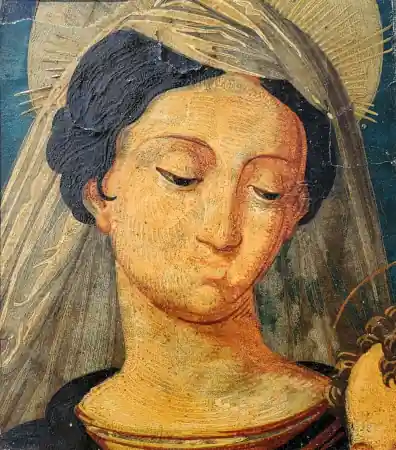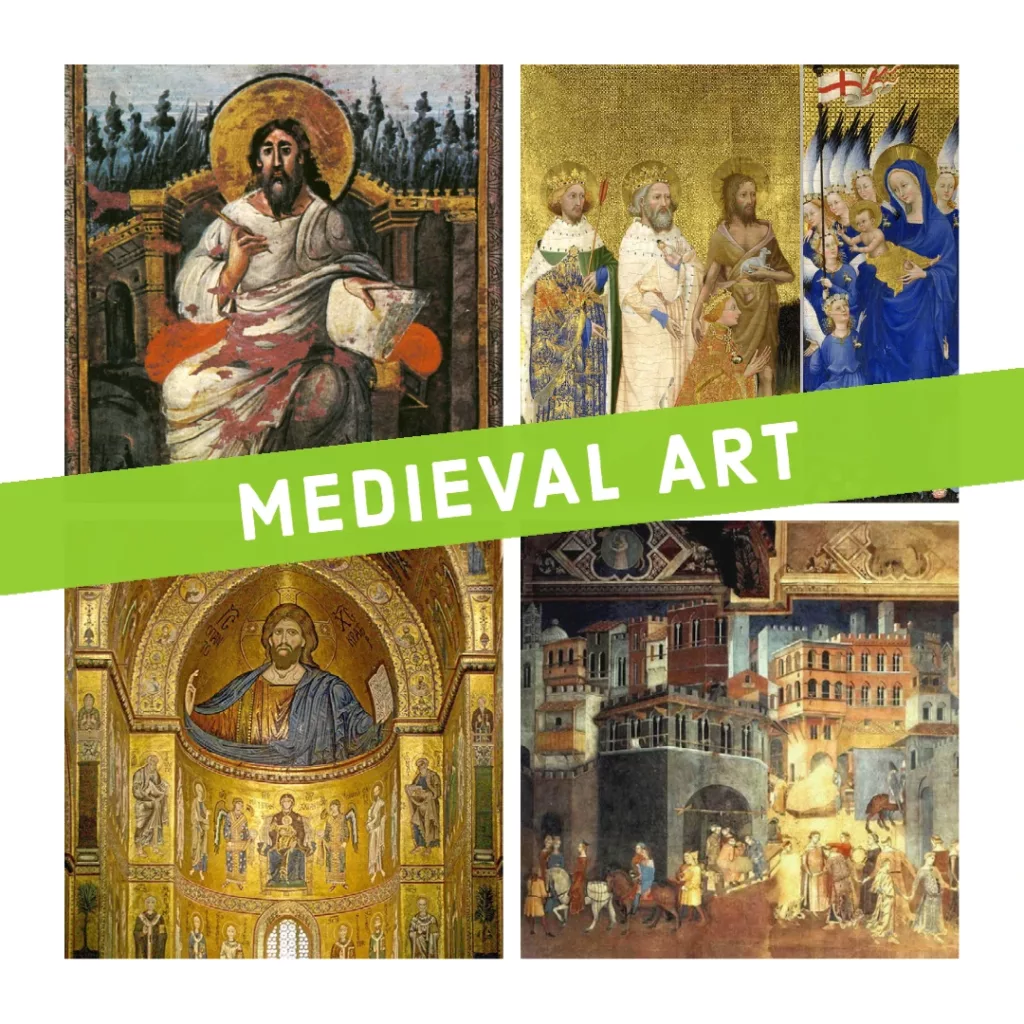Why Is Modern Art So Poor In Comparison To Medieval Art?
Contemporary or Modern Art is bad compared to Medieval Art because of the lack of understanding of Contemporary Art. The Christian church defined Medieval Art. Medieval Art is easy to understand and relates to long-held beliefs and traditions. Contemporary Art is much more than a representation of real-world objects, which makes its comprehension challenging.
Before I begin to compare and contrast Contemporary and Medieval Art, I should give a brief overview of each art period to level the playing field. As a result, we’ll have a single starting point for comparisons.
Medieval Art Introduction
The Middle Ages was the period in European history from the collapse of Roman civilization in the 5th century CE to the period of the Renaissance The period is interpreted as beginning in the 13th, 14th, or 15th centuries, depending on the region of Europe and other factors.
The three Middle Ages occurred between the fall of the Roman Empire and the Renaissance. Historians commonly divide the Middle Ages into three minor periods, known as the Early Middle Ages, the High Middle Ages, and the Late Middle Ages.
Early Christian and Byzantine Art, Anglo-Saxon and Viking Art, Insular, Carolingian, Ottonian, Romanesque, and Gothic Art all belong to this period. The Christian church and the sacred arts linked with it harmonized the many secular arts during the Medieval period.

It’s worth noting the Middle Ages lacked the concept of preserving older works for their creative quality rather than their relationship with a saint or founder figure. Therefore, we can now see why much surviving art was almost all religious.
Medieval Art includes painted decorations from the catacombs in Rome, grand Byzantine monuments which are all easily related to and talked about by ordinary people. Art created during this period is part of everyday life and was a central topic for study by scholars.
Romanesque architecture, such as the cathedral in Santiago de Compostela in Spain, and the great Gothic cathedrals of Amiens, Reims, and Notre-Dame in Paris, with its facade sculpture and stained glass, are also notable works from this period.
Contemporary Art Introduction
Contemporary Art is art created in the second part of the twentieth century or the twenty-first century. Their work is a dynamic mix of materials, methods, thoughts, and subjects that continue a tradition of pushing boundaries that began in the twentieth century.
The phrase Contemporary Art strictly refers to art created and produced by live artists. Today’s artists operate in and respond to a culturally diverse, technologically advanced, and multifaceted global world.
Contemporary Art as a whole is distinct in that it lacks a unified organizing principle, ideology. It is diverse and varied. Contemporary Art is part of a broader cultural conversation about things like personal and cultural identity, family, community, and nationality. Many would simply describe Contemporary Art as work created within our life with the thought that life spans and lifetimes differ and are not a set of defined dates.
It’s necessary to note contemporary is always changing and grounded in the present with a forward-moving start date. Much “modern” work ceased to be “current” when modernism became identified as a historical art trend. Hence, Modern Art is not the same as Contemporary Art but is sometimes used interchangeably depending on who is speaking, scholars or just regular folk.
Contemporary Art has no objective point of view, so it can be anything. It can be contradictory and even open-ended. And politics, globalization, technology, society and culture, and political assessment, just to mention a few, are all common topics in Contemporary Art.
Contemporary Art And Medieval Art Compared

1. No Room For Imagination Or Innovation In Medieval Art
The most essential distinction to make between Medieval and Contemporary Art is that there is no room for imagination or innovation in Medieval Art. During this time, they developed art as a representation of the real world and as a combination of known objects to form new compositions.
2. Absence of God In Contemporary Art
Another noticeable difference is the absence of God in Contemporary Art. Artists depicted people in medieval paintings in a position and posture that shows their relationship to God. There is no God in Contemporary Art. In many of the Medieval Art paintings, you see figures looking upward because they are closer to God. The paintings, therefore, suggest they might be more important. In addition, the size of the person is also an indicator of importance.
3. Medieval Art Was Prohibitively Expensive
At the beginning of the Middle Ages, commissioning a work of art or architecture was prohibitively expensive, making it available only to major institutions, such as the Church or the wealthiest individuals. As opposed to Contemporary Art where anyone with a spray can of color can be an artist.
4. Little Dimension In Medieval Art
In Medieval Art, people are drawn flat with no or very little dimension. People and objects look primitive. And that can be said of some Contemporary Art as well. But I’ll say it applies more so to Medieval Art.
5. No Irrational Or Subconscious Notions In Medieval Art
Contemporary Art has a Surrealism style. This is a philosophical and artistic movement that flourished in Europe between World Wars I and II. This style of art is primarily concerned with exploring irrational and subconscious ideas. Surrealist painters like experimenting with various things in order to express their deepest and thoughts.
6. No Unnatural Objects Or Shapes In Medieval Art
Contemporary Art has an abstract style. Abstract Art comes from unnatural objects such as geometrical patterns, forms, and sizes. This art form is based on landscapes and figures, showing simplicity, spirituality and cleanliness. In abstract art, colors, lines, textures, patterns, compositions, and processes are what it is all about. This is why abstract art is called non-objective art, which encompasses non-representational work. In Medieval Art, there is no such concept as non-representational art.
7. No Geometric Style In Medieval Art
Contemporary Art has a geometric style. Geometric Art is the whole geometry-inspired representation of different forms, angles, lines, points, and elements. A variety of geometric forms, for example, circles, squares, triangles, and rectangles, are used in this contemporary art style to produce complex forms and objects. In all styles, shapes, and sizes, geometric art designs come.
8. No Figurative Style In Medieval Art
Contemporary Art has a figurative style. Figurative Art represents modern art that uses human figures to depict real-world problems. The ultimate objective of this form of art is to offer a realistic image of life through means of illusion. In Modern Art, it can also employ this style within various kinds of art, such as minimalist, cubist, and abstract art.
9. No Pop Art Style In Medieval Art
Contemporary Art has a pop art style. Pop art is one of the most well-known innovations in the art of commercial and mass media. Artists employ standard things, journals, comic books, bottle cans, road signs, and other prominent commercial products to convey their message. In the artwork, artists often include names, logo designs, and photos of celebrities.
10. No Still Life Art Style In Medieval Art
Contemporary Art has a still life art style. Life art still represents paintings and dead sculptures of still life in Western art. Almost all kinds of human or natural items, including fruit, vegetable, foods, games, and other inanimate objects, are included in this art. Contemporary art depicts the celebration of material pleasures and recalls the shortness of human existence in the form of still life painting.
11. No Minimalist Art Style In Medieval Art
Contemporary Art has a minimalist style. Minimalism is a genre of abstract art that uses many geometric forms, like the square, the rectangle. The principal goal behind the use of this art is to represent truth without imitation. It depicts various aspects of the real world, such as landscapes, persons, experiences. Minimalistic art shows the beauty, simplicity, truth, and harmony of a highly pure form.
Conclusion
I am sure there is something I missed, especially when it comes to listing all the Contemporary Art styles. But I think you got a good idea of the differences between Contemporary Art and Medieval Art. And now can discern why many folks would ask why is contemporary art so bad as compared to Medieval Art.
Contemporary or Modern Art is bad compared to Medieval Art because of the lack of understanding of Contemporary Art. Medieval Art is easy to understand, as the art directly relates to long-held beliefs, traditions, and real-world objects.
When compared to other types of art, modern art is frequently difficult to comprehend and seen as garbage. Contemporary Art is becoming more difficult to comprehend as traditional styles go away. When looking at abstract items or lines on a plane, it might be difficult to decipher what the artist intended. Furthermore, several contemporary artists are known for clowning about.
References
Adler, A. M. (1990). Post-modern art and the death of obscenity law. The Yale Law Journal, 99(6), 1359-1378. jstor.org/stable/796739
Saunders, F. S. (1995). Modern art was CIA’weapon’. The Independent, 22. https://jfzuluaga.com/wp-content/uploads/Modern-art-was-CIA.pdf
Whiteley, G. (2010). Junk: art and the politics of trash. Bloomsbury Publishing. https://books.google.com/books?hl=en&lr=&id=KBCMDwAAQBAJ&oi=fnd&pg=PR5&dq=Modern+Art+trash&ots=OtBQuWG2RU&sig=rWg7Kcnz7J_xm9rnkSw8NAqJjas#v=onepage&q=Modern%20Art%20trash&f=false
Boldrick, S. (2015). Trash as Trash as Art: Reflections on the Preservation and Destruction of Waste in Artistic Practice. NANO: New American Notes Online, (7). https://www.proquest.com/openview/427cda5ddeada1f91a79c62dd41a14b5/1?pq-origsite=gscholar&cbl=4476954
By Berthold Werner – Own work, CC BY-SA 3.0, https://commons.wikimedia.org/w/index.php?curid=23609279
By Lorenzetti Ambrogio – http://www.wga.hu/frames-e.html?/html/l/lorenzet/ambrogio/index.html, Public Domain, https://commons.wikimedia.org/w/index.php?curid=4006762https://commons.wikimedia.org/w/index.php?curid=4006762
By Unknown (English or French) – Derivative of Image: The Wilton Diptych (left).jpg and Image:The Wilton Diptych (Right).jpg, Public Domain, https://commons.wikimedia.org/w/index.php?curid=1972868





